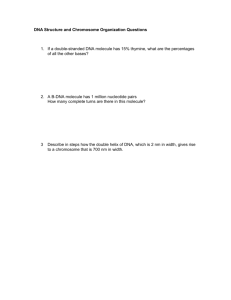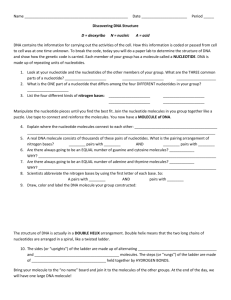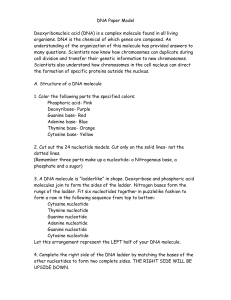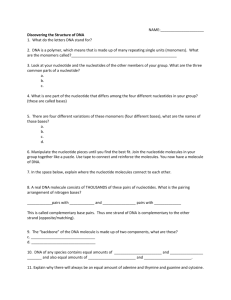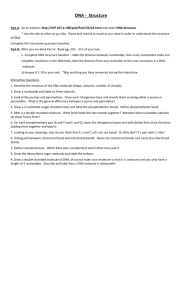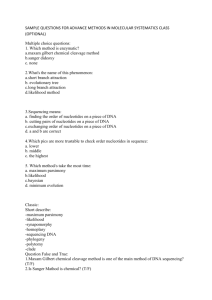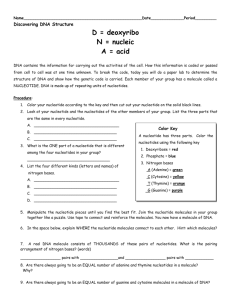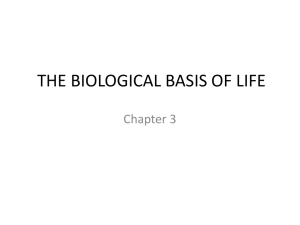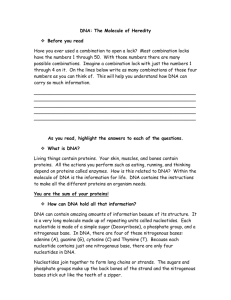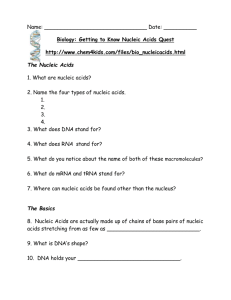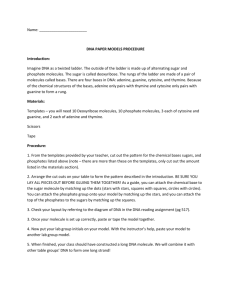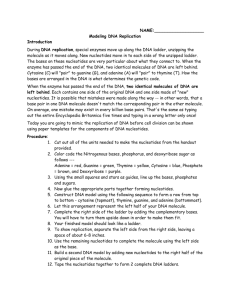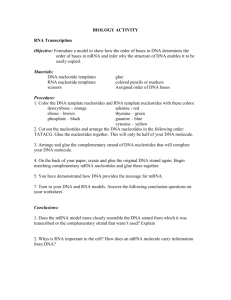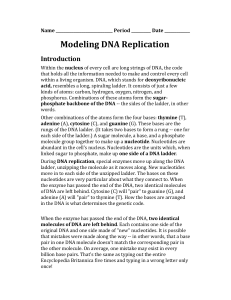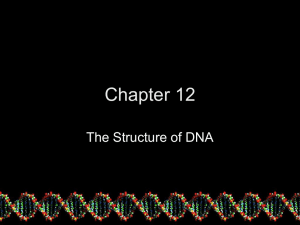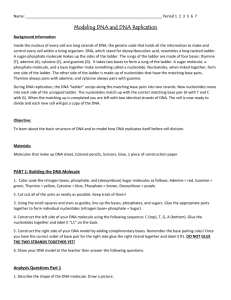Discovering DNA Structure
advertisement
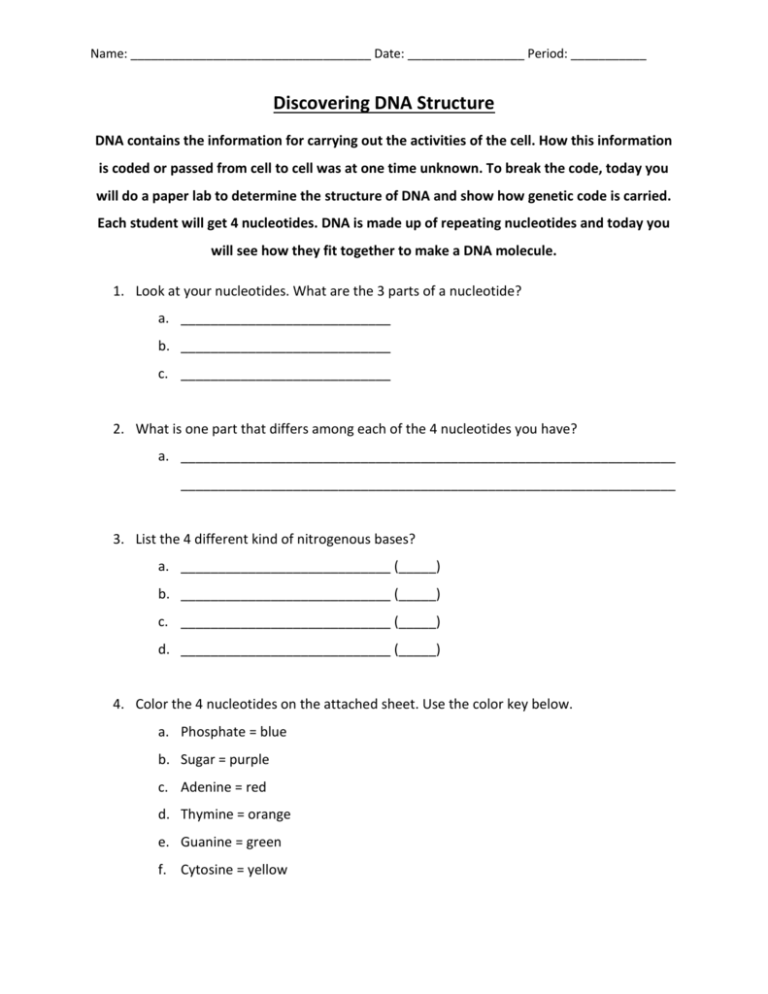
Name: ___________________________________ Date: _________________ Period: ___________ Discovering DNA Structure DNA contains the information for carrying out the activities of the cell. How this information is coded or passed from cell to cell was at one time unknown. To break the code, today you will do a paper lab to determine the structure of DNA and show how genetic code is carried. Each student will get 4 nucleotides. DNA is made up of repeating nucleotides and today you will see how they fit together to make a DNA molecule. 1. Look at your nucleotides. What are the 3 parts of a nucleotide? a. ____________________________ b. ____________________________ c. ____________________________ 2. What is one part that differs among each of the 4 nucleotides you have? a. __________________________________________________________________ __________________________________________________________________ 3. List the 4 different kind of nitrogenous bases? a. ____________________________ (_____) b. ____________________________ (_____) c. ____________________________ (_____) d. ____________________________ (_____) 4. Color the 4 nucleotides on the attached sheet. Use the color key below. a. Phosphate = blue b. Sugar = purple c. Adenine = red d. Thymine = orange e. Guanine = green f. Cytosine = yellow 5. Cut out the 4 nucleotide pieces. After you cut out each piece, write your name on the back of each one!!!! Manipulate and match up the nucleotide pieces until you find the best fit. Join the nucleotide molecules together like a puzzle. 6. Use the masking tape to reinforce the back of all of your nucleotides. They can be in whatever order you choose, as long as they fit. You should have a section of a DNA ladder now. 7. A real DNA arrangement consists of billions of nucleotides split up into a couple different strands. What is the pairing arrangement of nitrogen bases? a. _______________________ (_____) with_______________________ (_____) b. _______________________ (_____) with ______________________ (_____) 8. Are the always going to be the same number of A and T molecules in one strand of DNA? Why or why not? ________________________________________________________________________ ________________________________________________________________________ ________________________________________________________________________ ________________________________________________________________________ ________________________________________________________________________ 9. Are the always going to be the same number of A and T molecules in one strand of DNA? Why or why not? ________________________________________________________________________ ________________________________________________________________________ ________________________________________________________________________ ________________________________________________________________________ ________________________________________________________________________ 10. Say that a DNA molecule consists of 30% cytosine bases. What are the percentages of the other base pairs in that same molecule? a. Cytosine = 30% b. Adenine = __________ c. Thymine = __________ d. Guanine = ___________ 11. In the space below, sketch your DNA molecule. Complete it in the order that you chose to do on your molecule. 12. The structure of DNA isn’t actually straight (like a ladder) in the molecule you have made. It actually has a structure called __________________ ________________. What does this mean? ________________________________________________________________________ ________________________________________________________________________ ________________________________________________________________________ ________________________________________________________________________ 13. The sides or legs of the ladder are made up of alternating _________________ and __________________ molecules. The steps or rungs of the ladder are made of ___________________________ ___________________ held together by hydrogen bonds.
